Vitruvius’ De architectura was by no means the only book rediscovered from antiquity that dealt with the construction and use of machines and the Renaissance artist-engineers were also not the only authors producing new texts on machines. In this episode of our series, we are going to look at another stream of writings that led to some of the most impressive publications on machines ever produced.
Ancient books, in Europe, on machines do not begin with Vitruvius, who actually comes quite late in the development of this type of literature. There are several known authors from ancient Greece, whose works did not survive but who are mentioned and even quoted by later authors such as Vitruvius and Pliny. Polyidus of Thessaly, who is mentioned by Vitruvius, served under Philip II of Macedonia in the fourth century BCE. He is credited with the development of covered battering rams and a giant siege tower (helepolis) by Byzantium in 340 BCE. His students Diades of Pella and Charias, both also mentioned by Vitruvius, served under Philip’s son Alexander the Great.
In Alexandria the earliest known author was Ctesibius, who invented a wide range of machines, which he described in his Commentaries, now lost but known to both Vitruvius and Hero of Alexandria. Much better know is a contemporary of Ctesibius, Philo of Byzantium (c. 280–c. 220 BCE), also known as Philo Mechanicus, who lived and worked in Alexandria. He wrote a major work in nine books covering mathematics, general mechanics, harbour building, artillery, pneumatic machines, mechanical toys, siege engines, siege craft, and cryptography. His work on artillery and siege craft survived in Greek as did fragments of his books on mathematics and mechanical toys but were first translated in the 19th century. Parts of his book on pneumatics, however, survived in a Latin translation, De ingeniis spiritualibus, from an Arabic manuscript. It can however be assumed that his works were well known to and influenced other authors later in antiquity.
We have already met Vitruvius the most well-known author on things mechanical during the Roman Empire and had a brief reference to Athenaeus Mechanicus (fl. mid first century BCE). Athenaeus, a Greek living in Rome, wrote a book on siege craft titled On Machines, which cites both Diades of Pella and Philo of Byzantium, as sources. Much of his book parallels that of Vitruvius implying the use of common sources.
In the middle of the first century CE, we meet Hero of Alexandria, whose exact dates are unknown, perhaps the most well-known Greek engineer of Antiquity, who exercised a similar influence in the Renaissance to Vitruvius. Works that are attributed with certainty are Pneumatica (on pneumatics), Automata, Mechanica (written for architects and only preserved in Arabic), Metrica (measuring areas and volumes), On the Dioptra, Belopoeica (war machines), and Catoptrica (the science of reflected lights). His Belopoeica is attributed to Ctesibius. The Metrica first reappeared in the nineteenth century and the Mechanica was unknown in Europe. However, the Pneumatica, the Automata, and the Belopoeica were translated from Greek into Latin and printed and published in the sixteenth century.
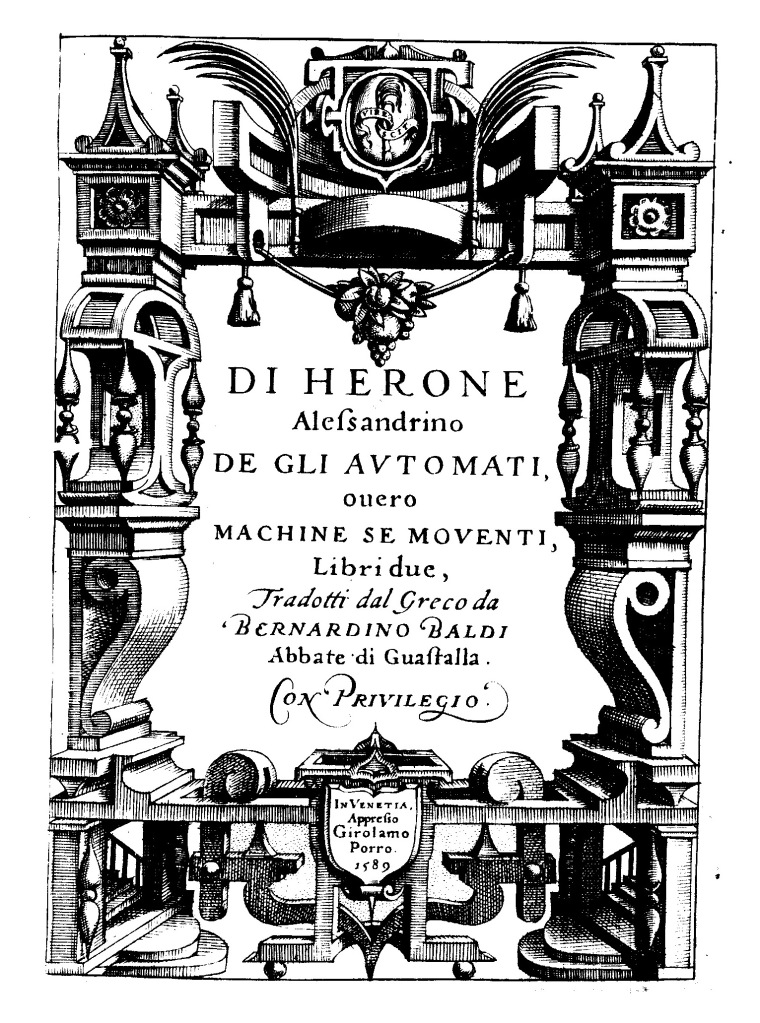
Hero was the last of the technical authors of antiquity but the later authors such as Pliny the Elder (23/24–79 CE) or Pappus of Alexander (c. 290–c. 350 CE) reference authors such as Vitruvius and Hero.
Before moving forward to the Renaissance, we need to take a brief look at the developments in the Islamic Empire. In the ninth century the translators the Bana Musa, three Persian brother, Ahmad, Muhammad, and Hasan bin Musa ibn Shakir, published a large, illustrated work on machines the Book of Ingenious Devices in 850 CE. It drew on the work of Hero of Alexandria and Philo of Byzantium as well Persian, Chinese, and Indian engineering. It was translated into Latin by Gerard of Cremona in the thirteenth century.
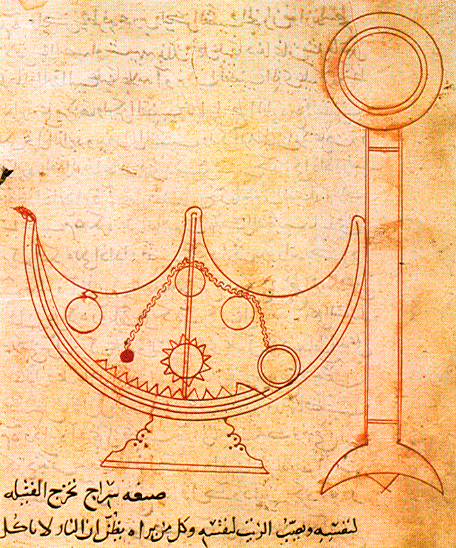
In the twelfth century Badīʿ az-Zaman Abu l-ʿIzz ibn Ismāʿīl ibn ar-Razāz al-Jazarī (1136–1206) wrote his The Book of Knowledge of Ingenious Mechanical Devices. Truly spectacular, it contains descriptions of fifty complex machines and was the most advanced such book produced up till this time, but it was never translated into Latin and so had no influence in the Renaissance.
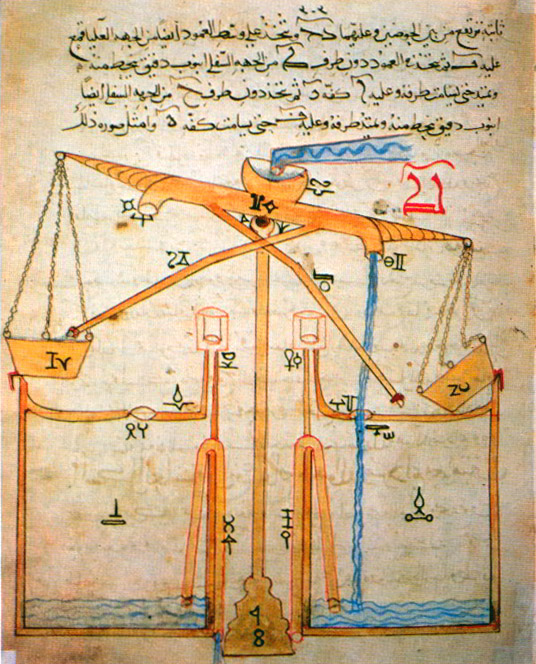
It should be noticed that in antiquity texts on machines had an emphasis on war machines. During the fifteenth century the first texts on machines were also on war machines and were written by physicians and not artisans. Konrad Kyeser (1366–1405) wrote a book on military engineering, Bellifortis, dedicated to the Holy Roman Emperor Ruprecht III, who ruled from 1400–1410.
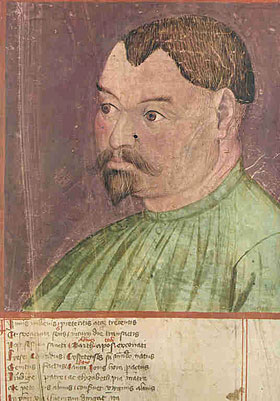
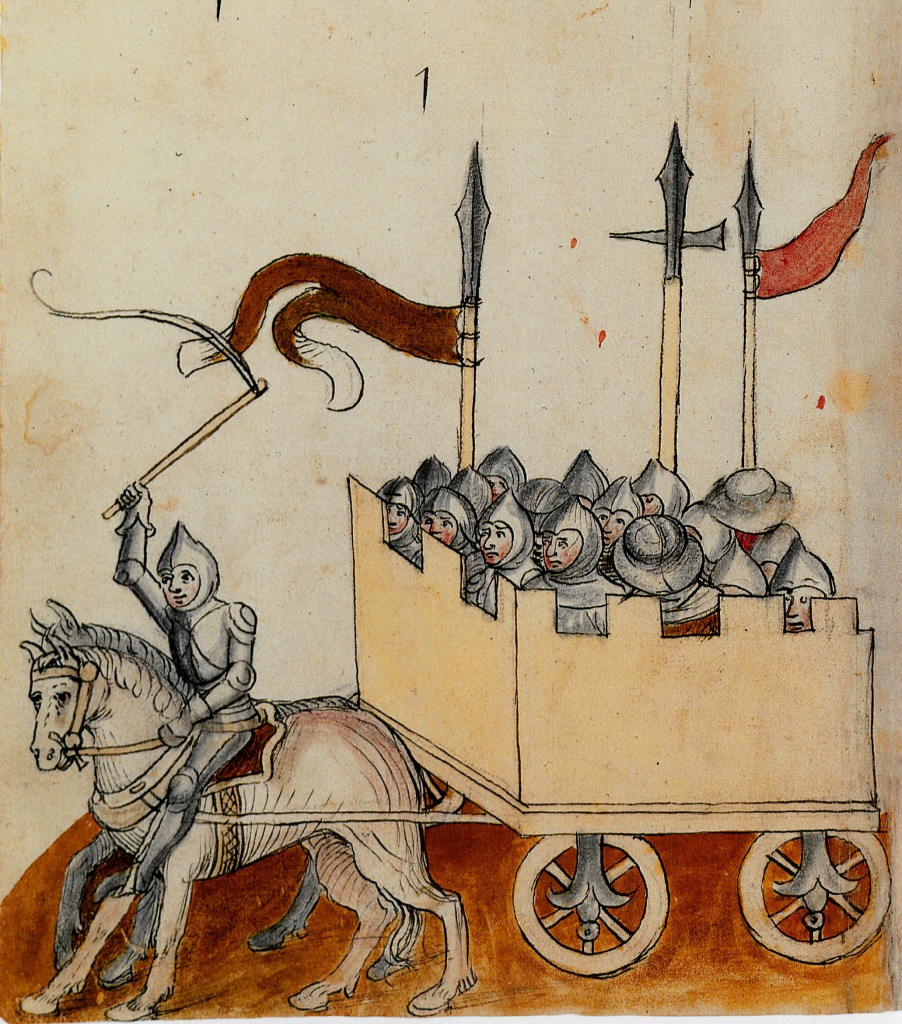
Giovanni Fontana (c. 1395–c. 1455), who like Kyeser studied medicine at the University of Padua, also wrote a book on military engineering, Bellicorum instrumentorum liber.
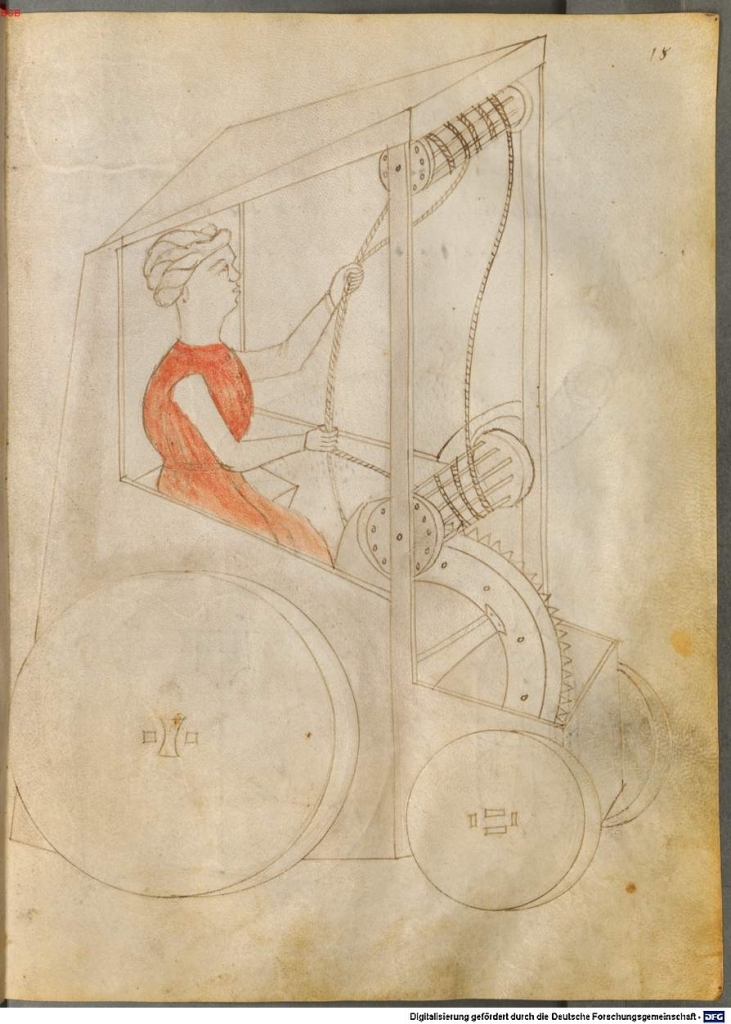
In Germany in the fifteenth century there were several books on military engineering written in the vernacular as well as a German translation of Kyeser’s Bellifortis. The author of the Feuerwerksbuch from 1420 is not known. Martin Mercz (c. 1425–1501), a gunner, also wrote a Feuerwerksbuch around 1473. Philipp Mönch wrote a Kriegsbuch in 1496
The texts produced by the Renaissance artist-engineers that we looked at in the last episode, whilst distributed in manuscript, were never issued as printed books, as was the case with most of the fifteenth century books of military engineering. The introduction of printing to the genre of machine texts had a major impact. One book on military engineering that was printed and published was the Elenchus et index rerum militarium by the humanist scholar Roberto Valturio (1405–1475), a compendium of ancient authorities with an emphasis on the technological aspects of warfare.
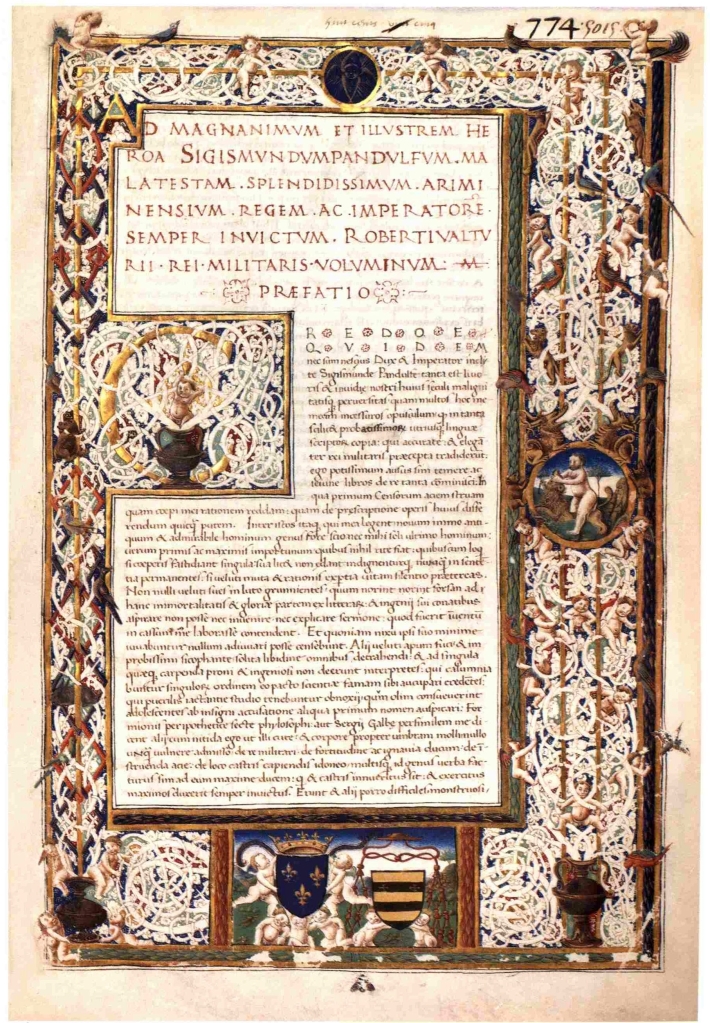
It was written for and dedicated to Sigismund Malatesta of Rimini (1471-1468), a successful military leader but also a humanist poet, originally between 1455 and 1460 and distributed widely in manuscript but was published in Verona in 1472. It went through many printed editions and translations. Leonardo da Vinci was known to have owned a copy.
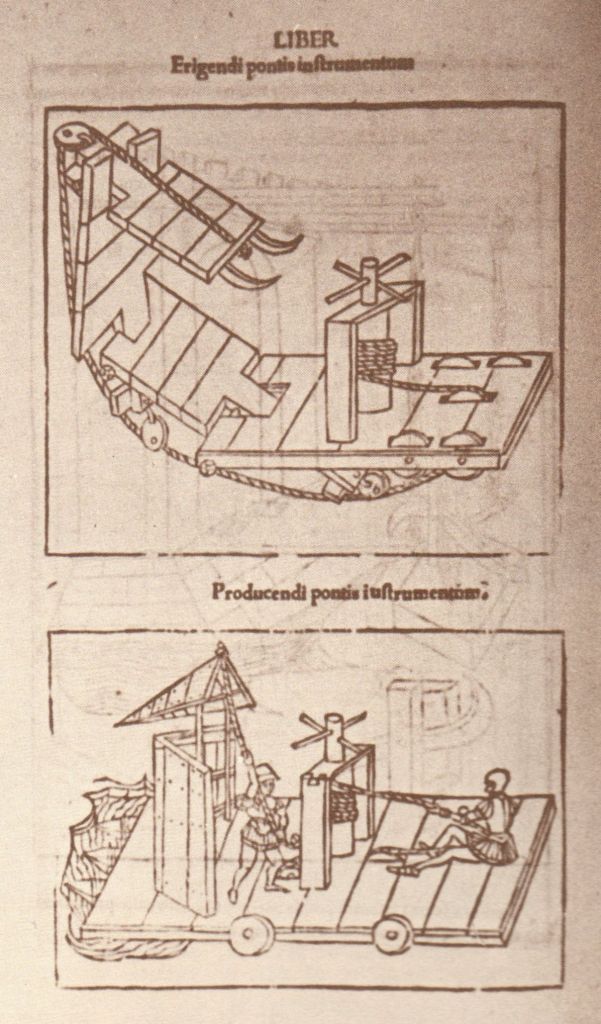
Two printed books in particular set new standards for books on machines and engineering, the Pirotechnia of Vannoccio Biringuccio (1480–died before1539) published posthumously by Curtio Navo in Venice in 1540
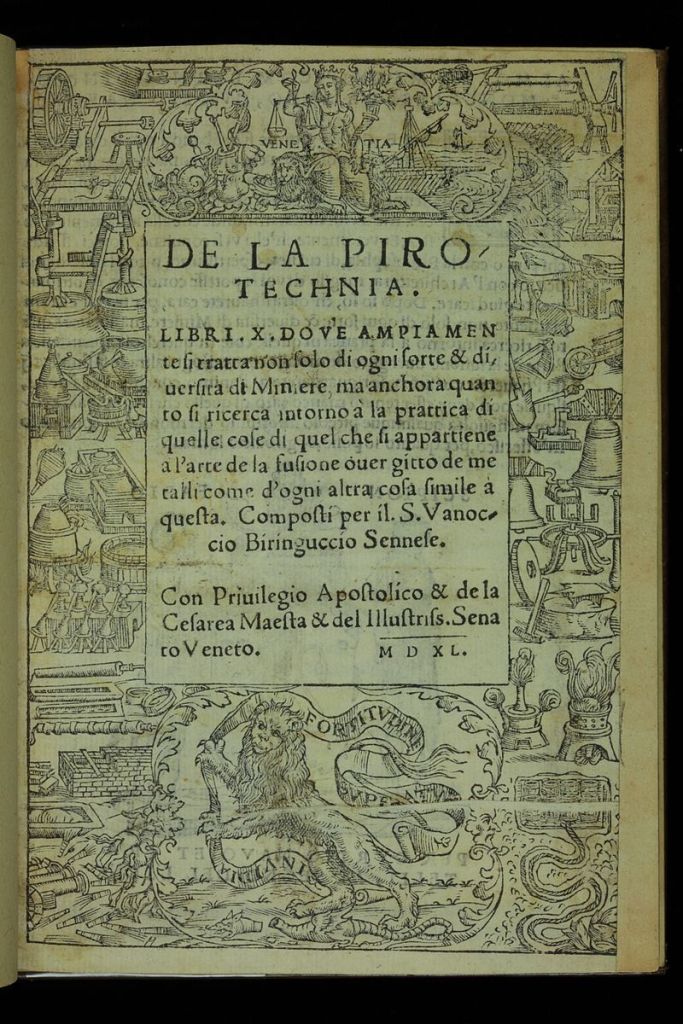
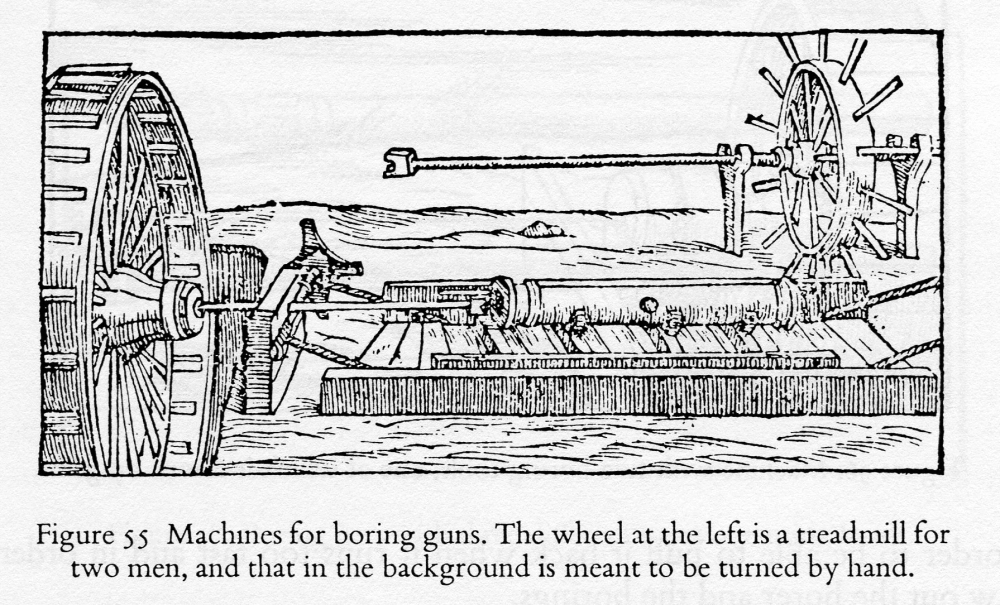
and De re metallica by Georgius Agricola (1494–1555) also published posthumously by Froben in Basel in 1556.
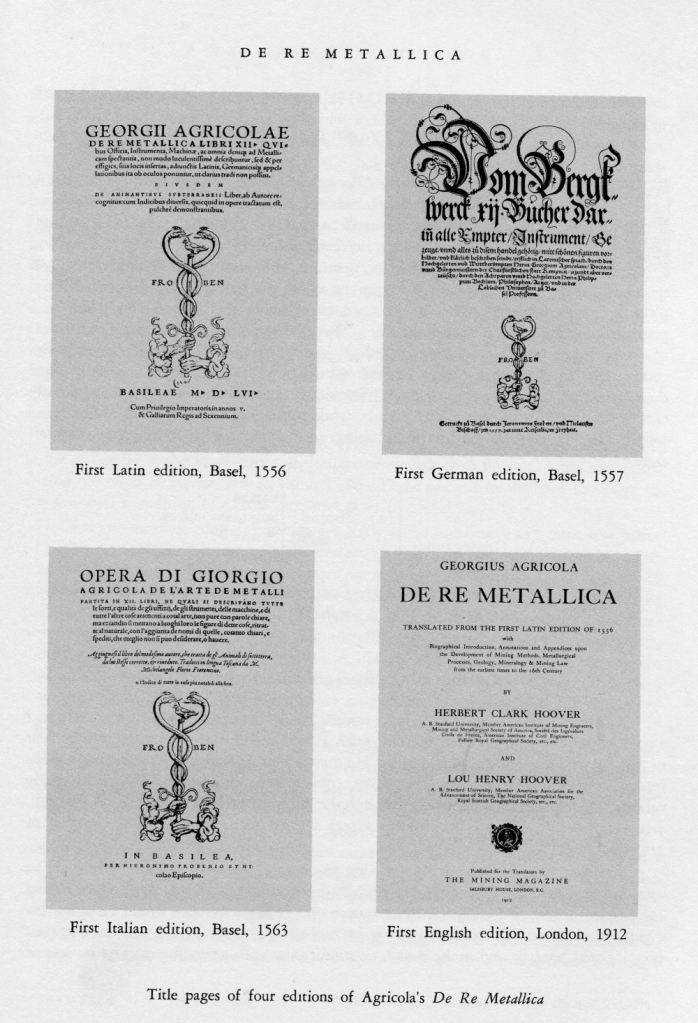
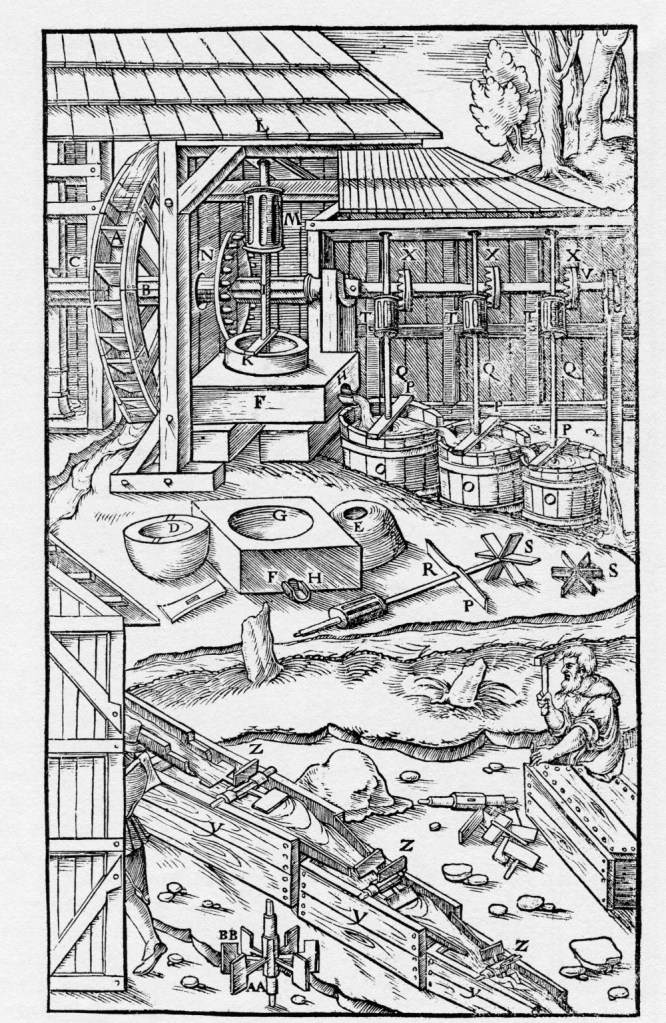
Both books deal with mining, the extraction of metallic ores and the working of metal smelted from the ores. Both are lavishly illustrated with the drawings in Agricola’s book being of a much higher standard than those in Biringuccio’s book.
I have dealt with both books and their authors in earlier posts (see links above) and so won’t go into great detail here but in these two books with have an excellent example of the crossover between the world of the university educated theoretician and the artisan on artisanal topics. Agricola is a university educated physician writing theoretically about a group of related artisanal topics, whereas Biringuccio is an experienced artisan writing a theoretical book about his artisanal trades.
The late sixteenth century saw the birth of a new book genre, the machine book. These were books of diagrams of machines with brief descriptions, usual presented by the author to a powerful patron. The main ones were very popular and went through several editions or reprints. These books often contained not only machines designed by the authors, but their presentations of machines drawn from other sources. Many of these studies were almost certainly not intended as serious designs to be built but were rather ingenious studies designed to impress rich patrons, in the nature of the futuristic design studies that car companies present at car shows. This also, almost certainly, applies to many of the designs to be found in the manuscripts of Leonardo da Vinci.
The earliest of the machine books by the French Protestant, inventor and mathematician, Jacques Besson (1540? – 1573). He said that he was born in Colombières near Briançon in the Alps on the south-eastern border of France, now in Italy. In the 1550s he taught mathematics in Paris and was working as a hydraulic engineer in Lausanne, Switzerland. In 1559 he published a book in Zurich and in 1561 he was awarded citizenship in Geneva as a science and mathematics teacher. In 1562 he was a pastor in Villeneuve-de-Berg in France but 1565 finds him back in Paris where he published his La Cosmolabe, a multiple instrument based on the astrolabe designed for use in navigation, surveying, cartography, and astronomy.
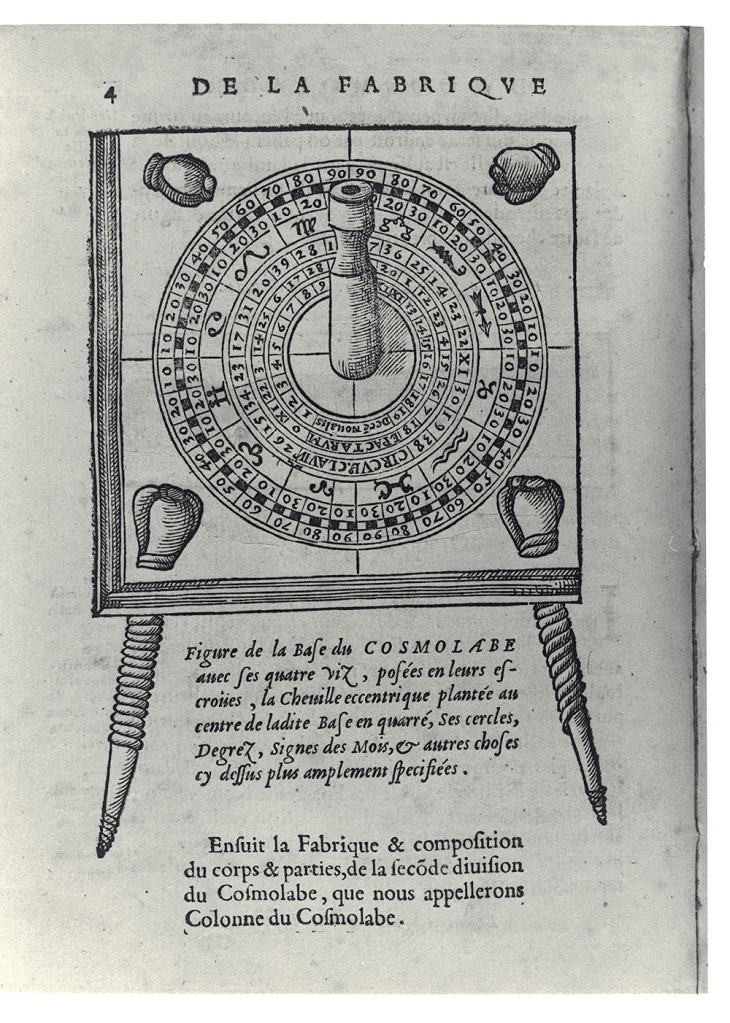
In 1569 in Orléans he presented a draft of his new volume Theatrum Instrumentorum (giving the machine book genre the alternative name of Theatre of Machines) to Charles IX, as a result returning to Paris as Master of the Kings Machines. The Theatrum Instrumentorum, containing sixty plates, was printed and published in 1571-2.
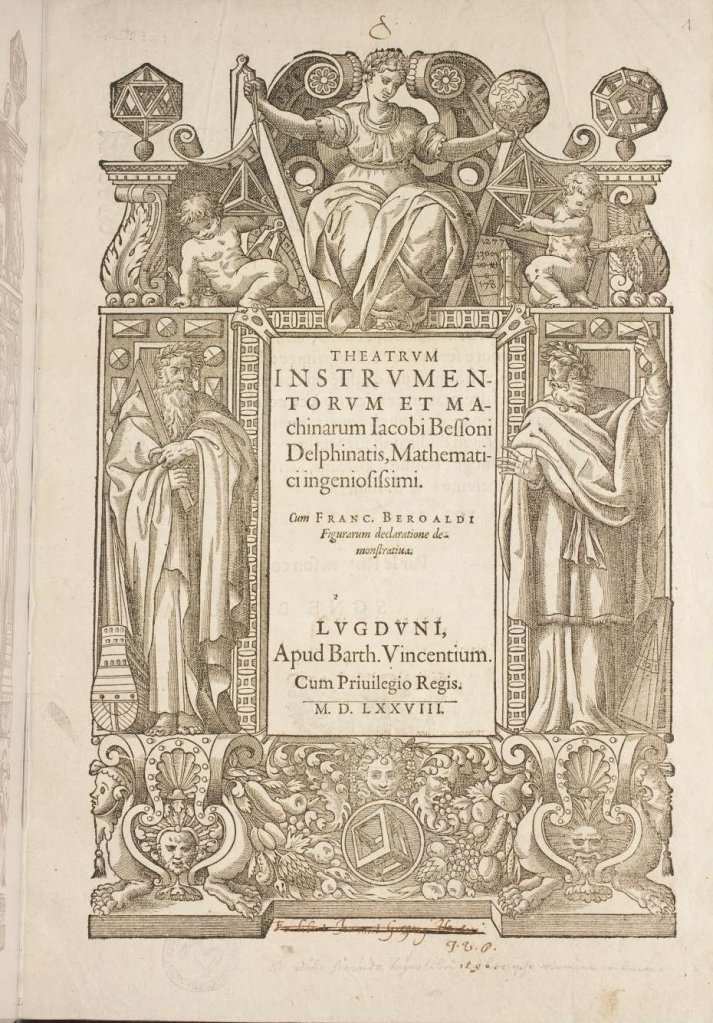
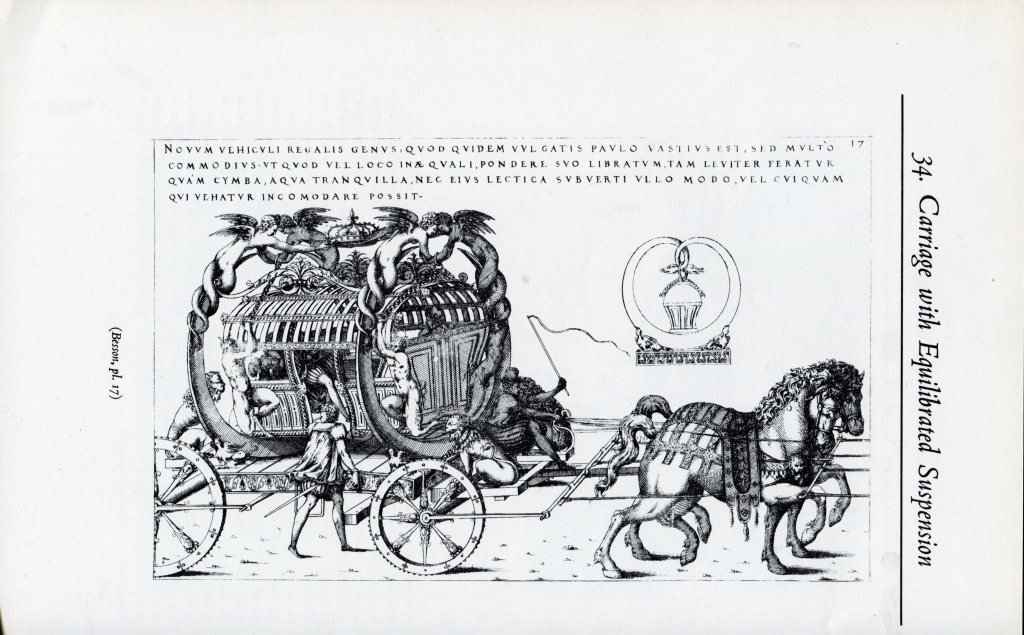
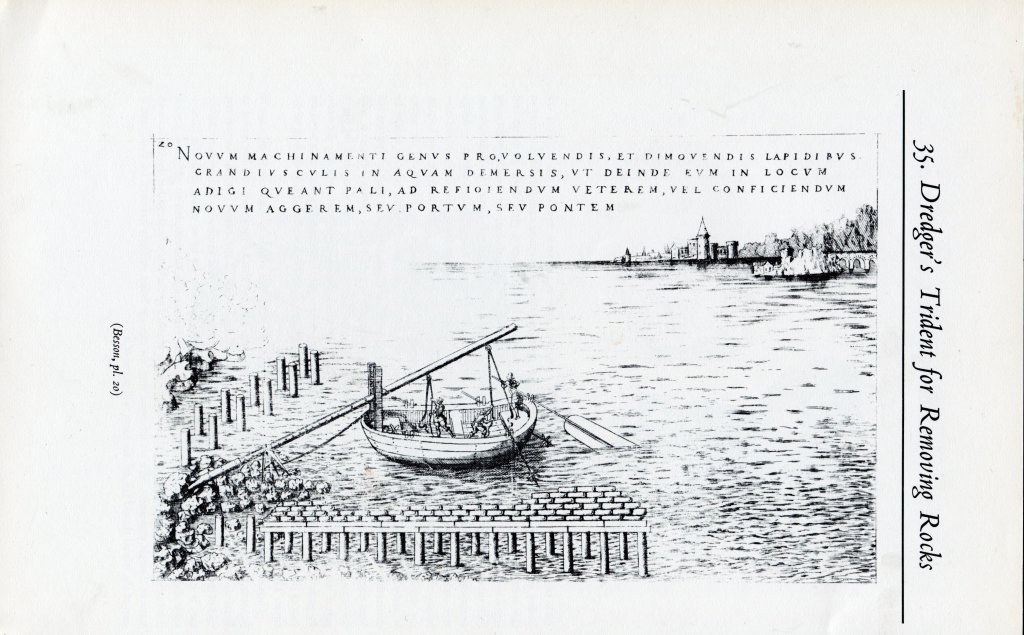
In Besson case his book only contains machines that he claimed to have invented himself. Following the St Bartholomew’s Day Massacre in 1572 Besson fled to London where he died in the following year.
In 1572, our next machine book author, Agostino Ramelli (1531–c. 1610) a Catholic military engineer, was involved in the siege of the Protestant stronghold, La Rochelle.
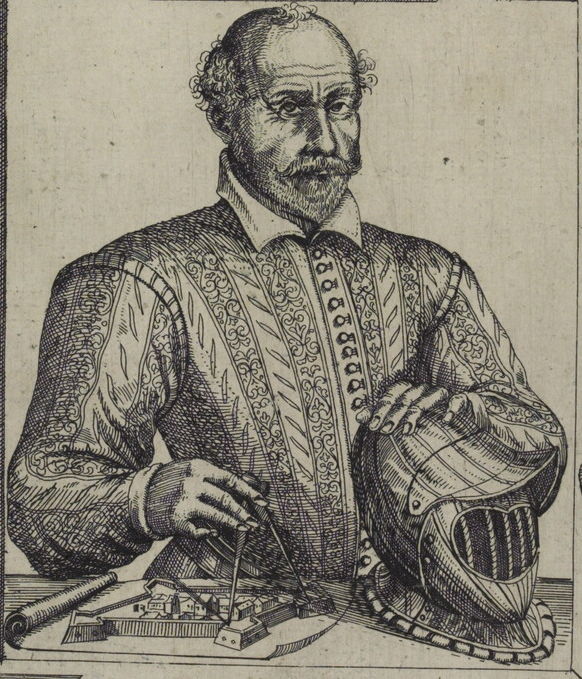
Very little is known about Ramelli other than that he was born in Ponte Tresa on Lake Lugano on the border between Switzerland and the Duchy of Milan. He seems to have served most of his early life as a military engineer and comes to prominence at La Rochelle, because he was wounded and taken prisoner. Henry, Duke of Anjou, arranged his release and when Henry became King of France in 1575, he apparently appointed Ramelli royal engineer, as he styled himself in the preface to his book, engineer of the most Christian King of France.
In 1588 he self-published his Diverse Et Artificiose Machine, the book, the largest of the genre, contains one hundred and ninety-five plates, printed from high quality engraved copper plates. The majority of the machines are hydraulic engines. Unlike Bresson, who included no war machines in his book, about one third of Ramelli’s book consists of war machines.
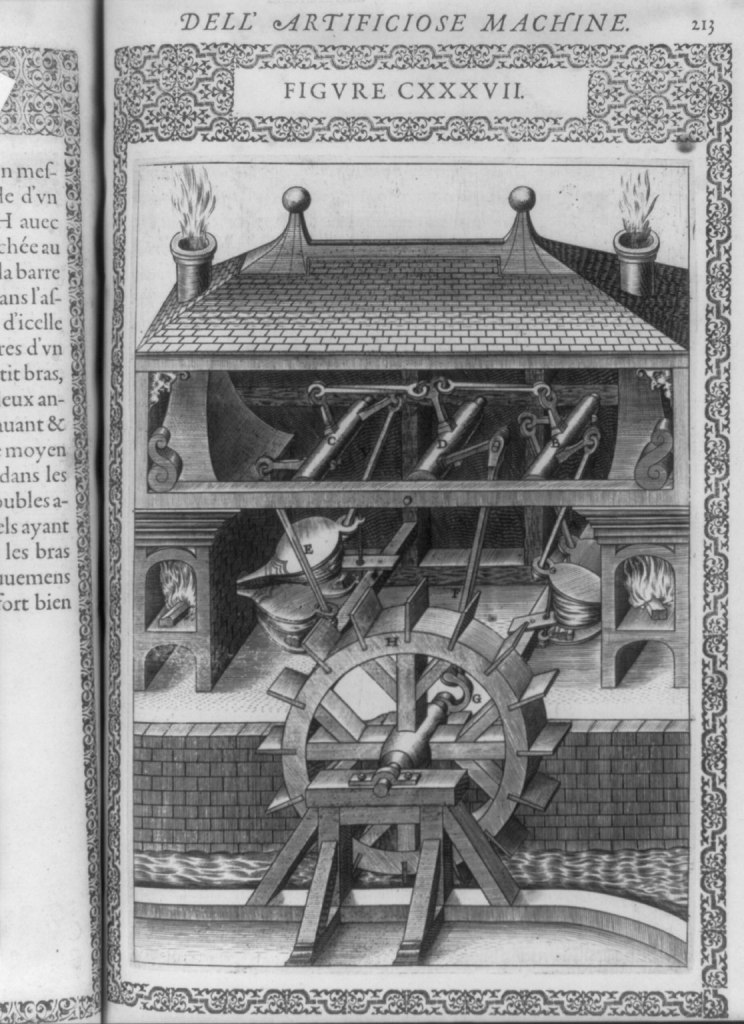
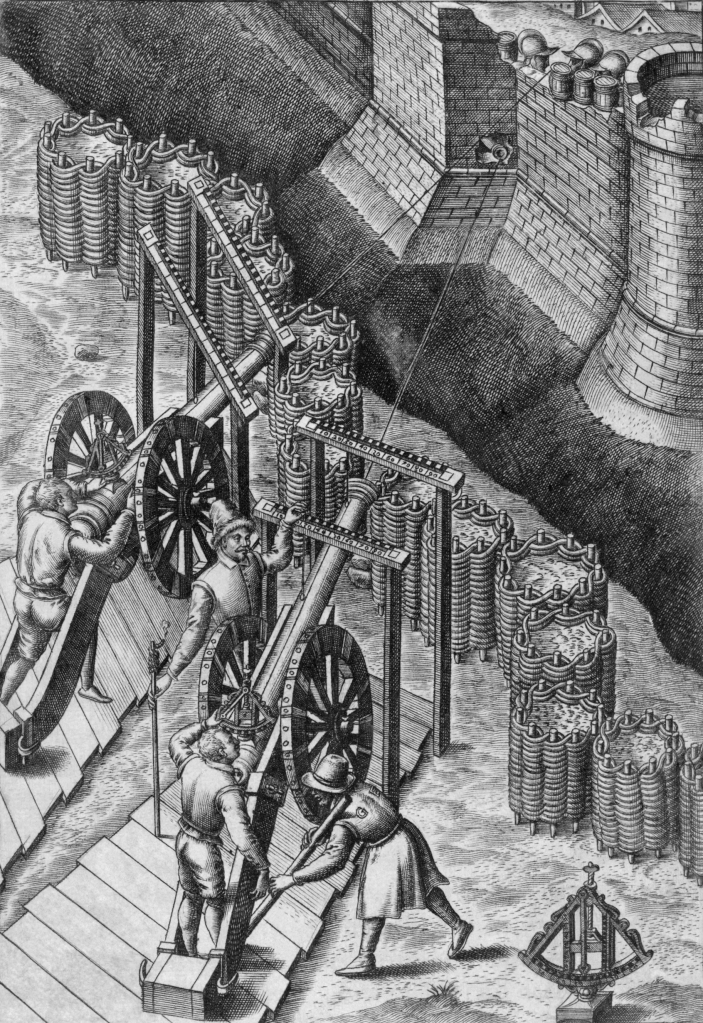
Ramelli is certainly today the most well known of the machine book authors because his book-wheel has become an iconic image on social media. Due to the lavish quality of the illustrations Ramelli’s book became an instant coffee table book, which was probably his intention, and is still in print today.
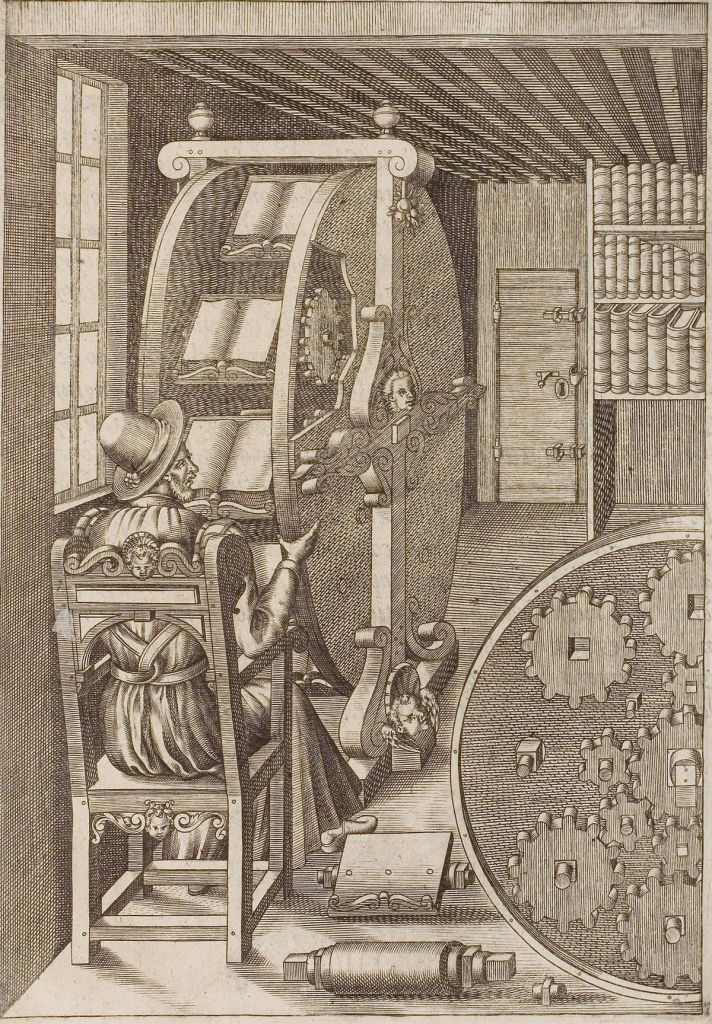
We know very little about Bresson and even less about Ramelli, but in the case of the third author of a major machine book, Vittorio Zonca (1568–1603), we know next to nothing. His book, Novo Teatro di Machine et Edificii, was published posthumously by Francesco Bertelli in Padua in 1607. Bertelli appears not to have known Zonca but describes him as a Paduan architect. Like the books of Bresson and Ramelli. Zonca’s volume went through several edition.
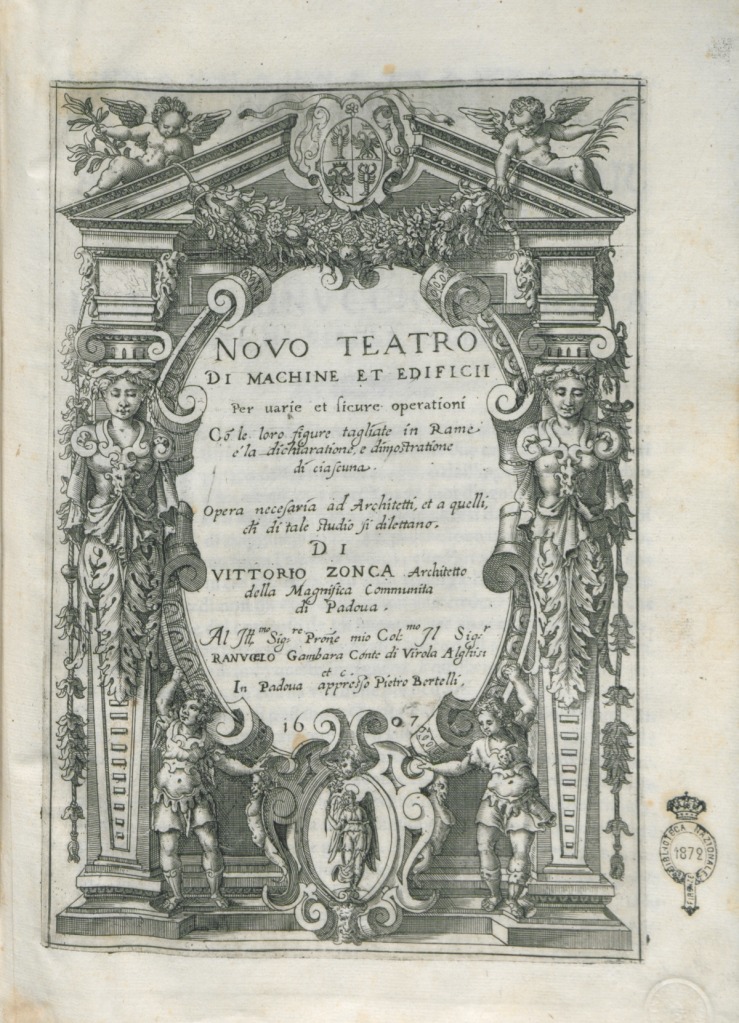
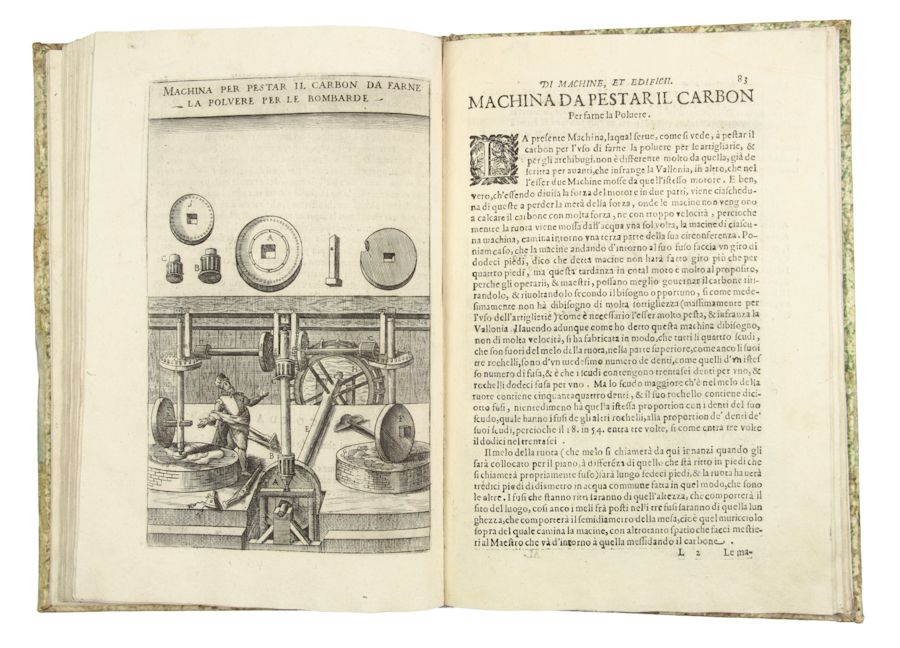
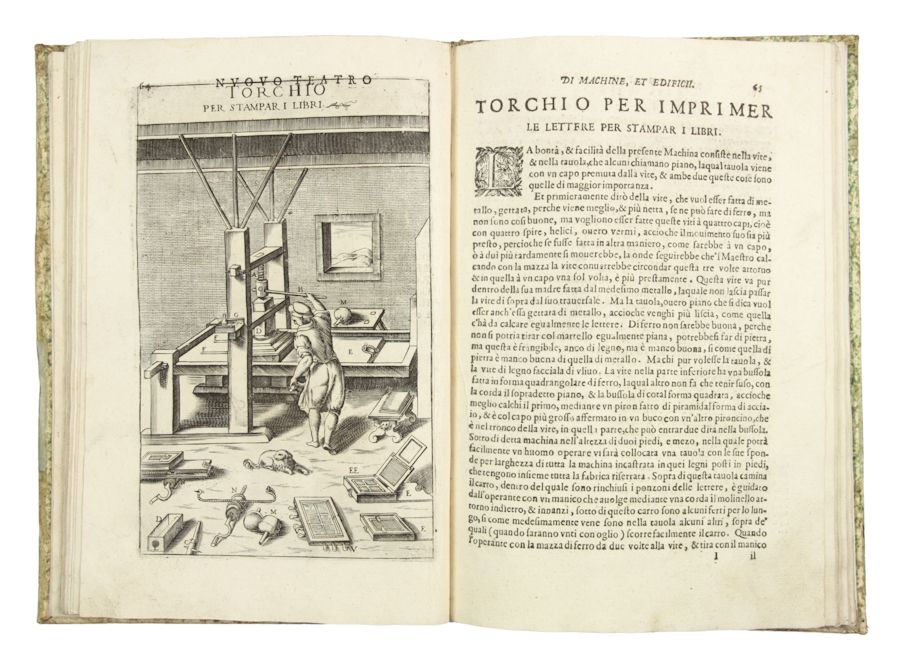
Interestingly the German, Jesuit polymath, Johann Schreck (1576–1630), one time member of the Accademia dei Lincei and friend of Galileo, published a book in Chinese in 1627, based on Zonca’s book and incorporating plates from Bresson and Ramelli titled, Diagrams and explanations of the wonderful machines of the Far West (abridged Chinese title, Qí qì túshuō).
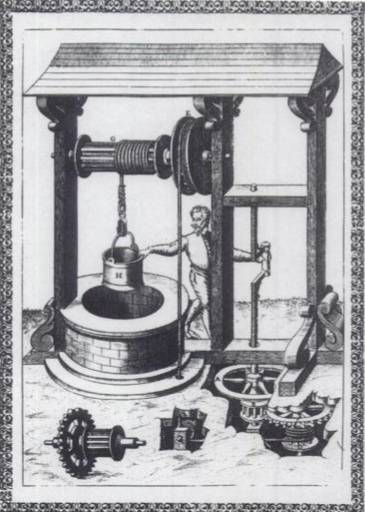
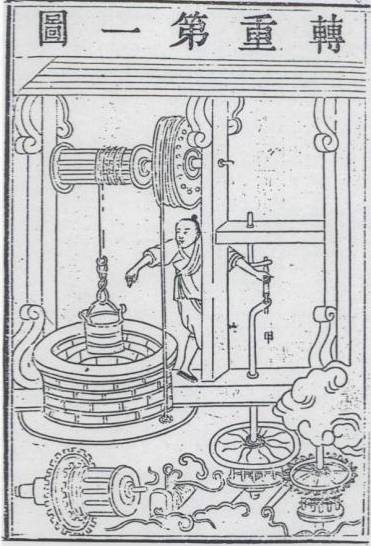
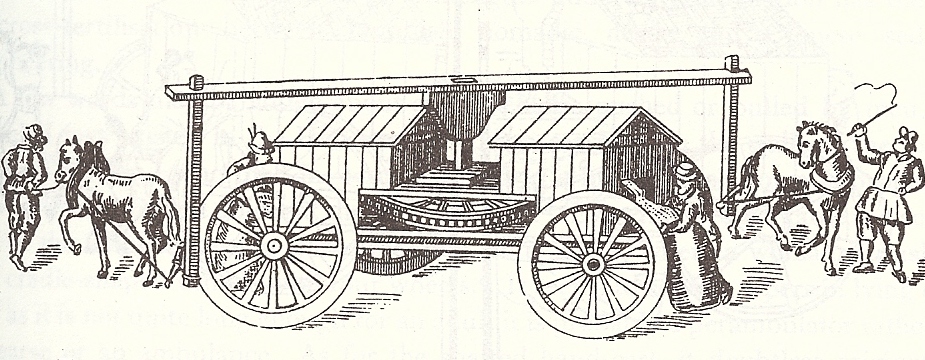
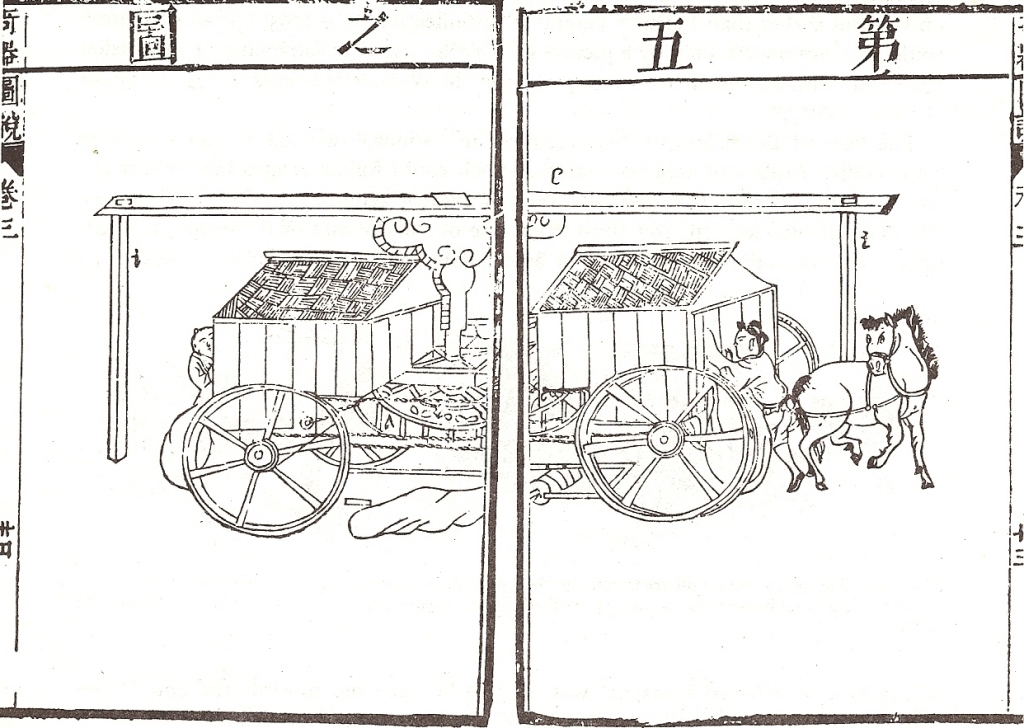
The German architect and engineer, Heinrich Zeising (died 1610 or earlier) compiled the first German machine book borrowing heavily from the works of Walther Hermann Ryff’s German edition of Vitruvius, Besson, Ramelli, Zonca, Gerolamo Cardano, and others This was published as Theatrum Machinarum in six parts by Henning Grosse in Leipzig between 1607 and 1614. In the foreword to the second part in 1610, Grosse informed the reader that Zeising was deceased .
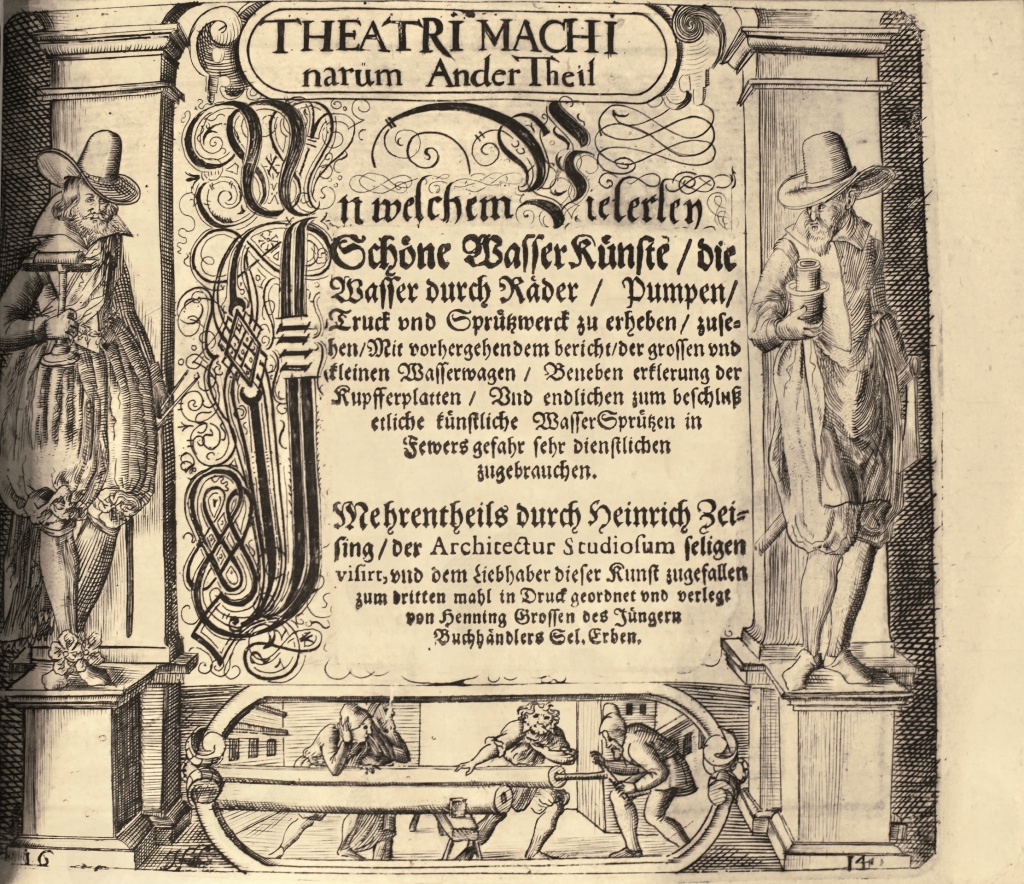
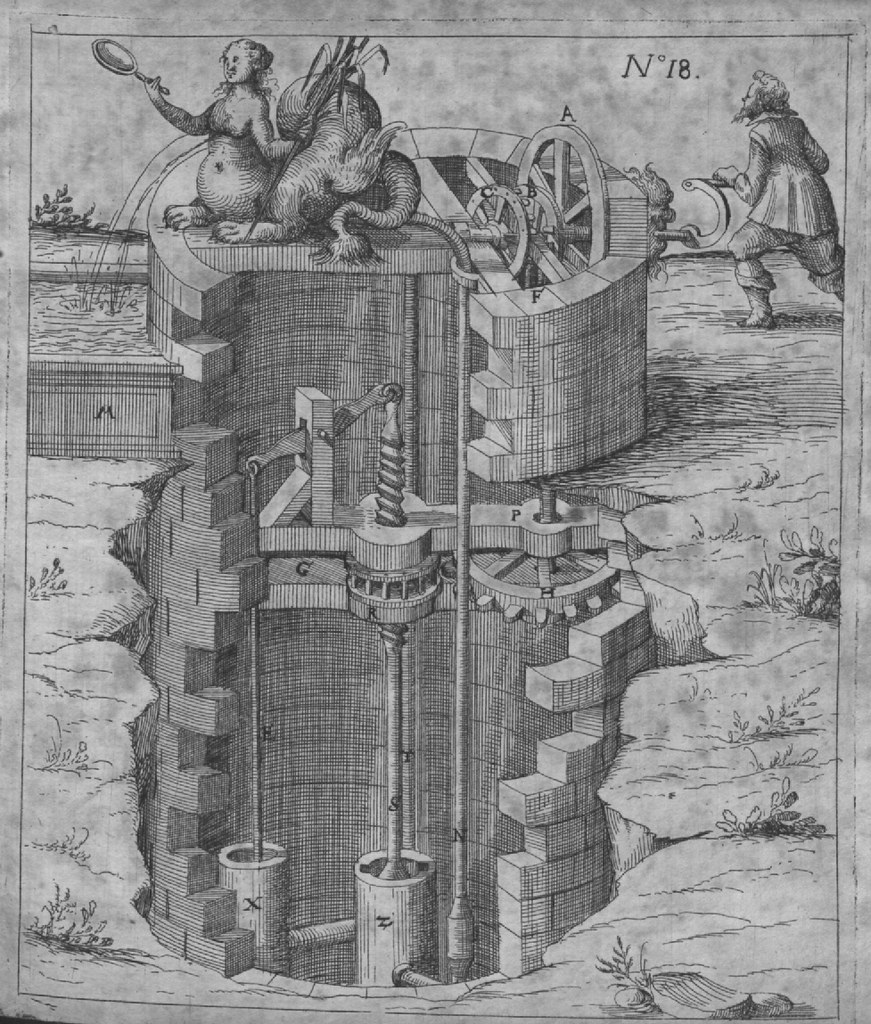
The Bishop of Czanad in Hungary, Fautus Verantius (c. 1551–1617), in his retirement, published a multilingual machine book, Machinae Novae, in 1616. It had 49 plates containing 55 machines, described in Latin and Italian in one variant and in Latin, Italian, Spanish, French, and German in another. There exists the possibility that Verantius saw and was influenced by Leonardo’s manuscripts.
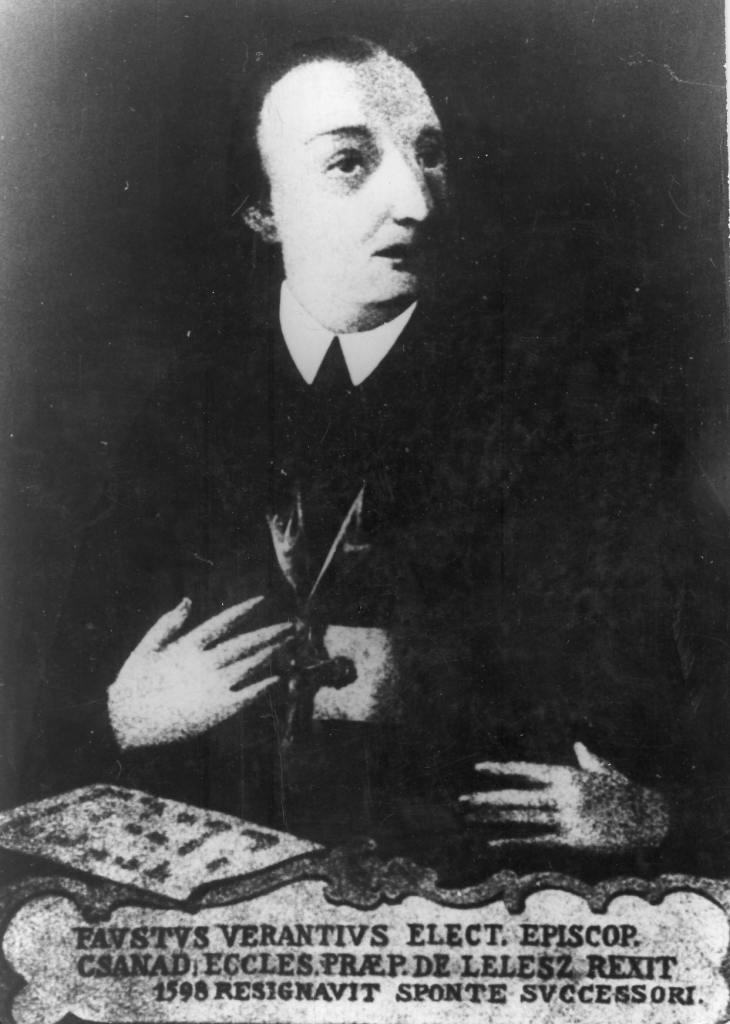
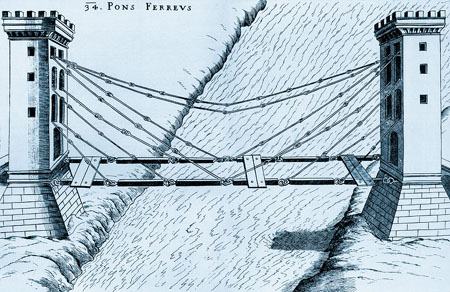
In 1617 Octavio Strada published an encyclopaedic collection of machine drawings supposedly complied by his grandfather Jacopo Strada (1517–1588)–courtier, painter, architect, goldsmith, and numismatist–under the title La premiere partie des Desseins Artificiaux in Frankfurt, about which very little in known.
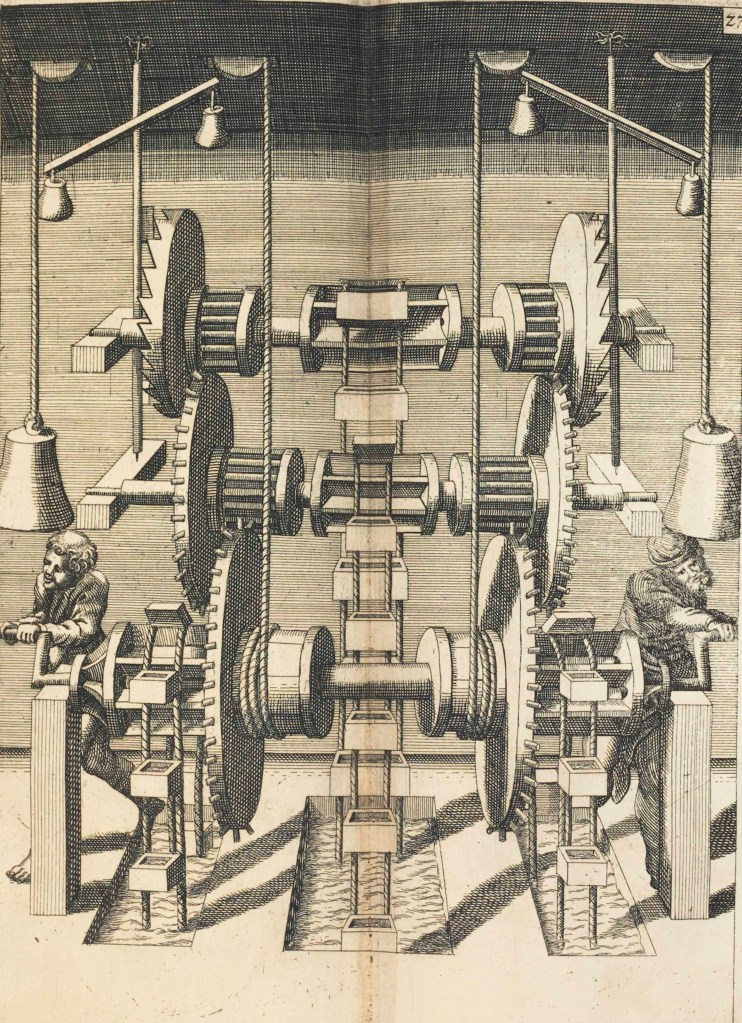
The Italian engineer and architect, Giovanni Branca (1571–1645) dedicated a collection of illustrations of mechanical inventions to the governor of Loreto Ancona, which he then published as a book Le machine in 1629. The book contains 63 illustrations with descriptions in Latin and Italian, but whereas the books of Bresson and Ramelli are large format volumes with lavish copper plate engravings, Branca’s book is a small octavo volume illustrated with simple woodcuts.
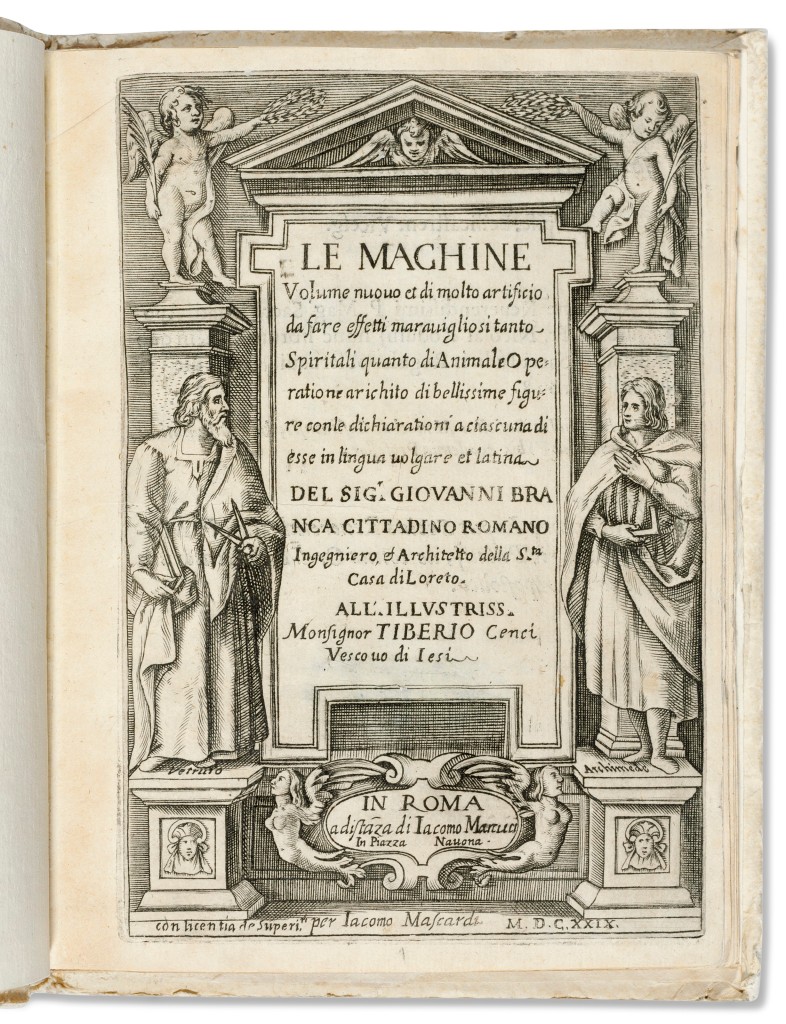
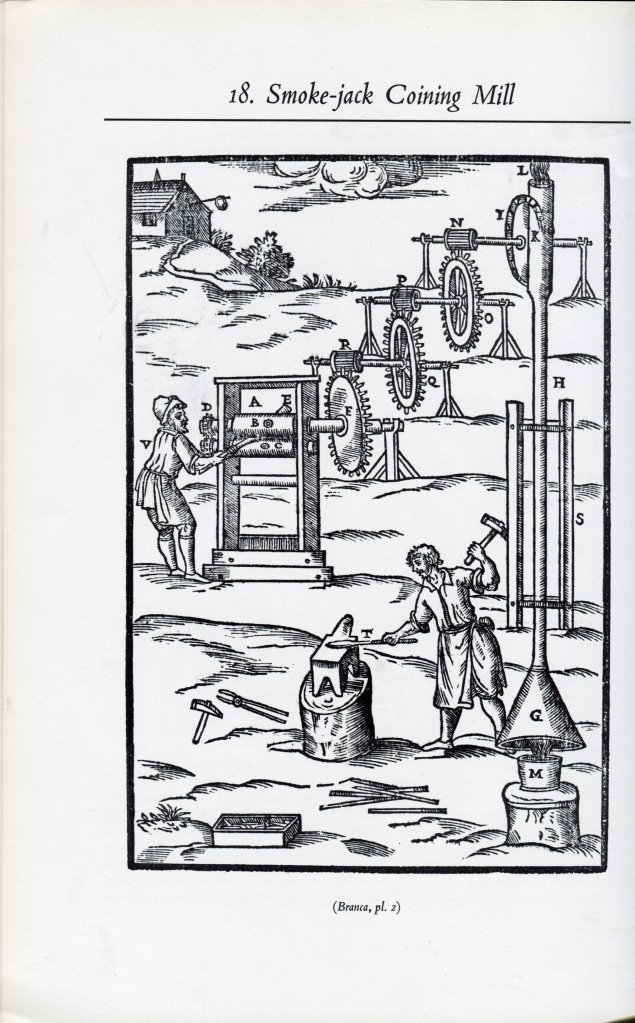
In the relatively brief period covering the last quarter of the sixteenth century and the first quarter of the seventeenth century, the Renaissance Theatre of Machines books, as they became known after the first one from Jacques Besson, were very popular. Although they continued to be reprinted throughout the seventeenth century their time was over and literature over technology moved on into different formats. This is one of the signs that Renaissance science did indeed peter out in the middle of the seventeenth century.